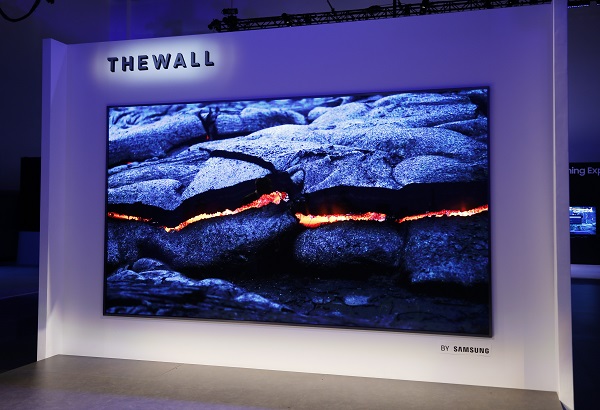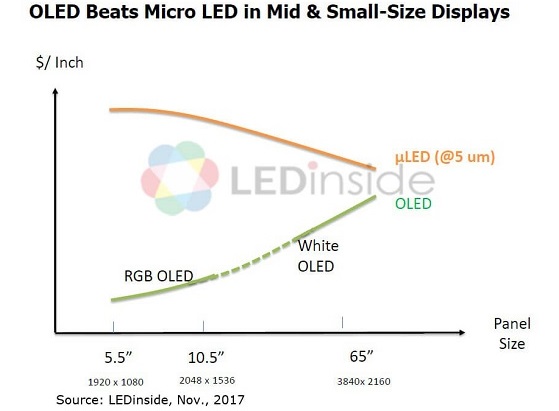 |
|
(Image: Samsung) |
Whether you are at CES 2018 at the moment, you’ve probably already learnt that Samsung is exhibiting its gigantic Micro LED TV ‘the Wall’ at its First Look event.
Comprised of several bezel-less Micro LED display modules, the self-emitting wall-size display is sized 146’’ and it delivers beautiful images with outstanding brightness, definition, color gamut, and black levels.
Before the CES 2018 started, some company expressed its concern that Samsung might not be able to display its Micro LED TV as it claimed last year due to difficulties occurring in the production processes. However, Samsung succeeded and brought those displays to the venue as promised. Here they are, integrating into a massive digital wall.
LEDinside has done a quick analysis and found Samsung’s act might just give a clue to the industry about where Micro LED can pick as its base market to penetrate and compete with other display technologies.
Compared with LCD and OLED displays, Micro LED displays are just too expensive to produce and the challenges in the manufacture of micron-size LEDs and the process to mass transfer them onto a backplane are still draining lots of companies. How to manage those problems within limited time is testing companies involved in the development.
The price competition in the market of mainstream LCD TVs (55”-65”) is way beyond heated. Both the production costs of LCD and OLED TV can be reduced to the point where both manufacturers and consumers would accept. In the short term, there isn’t really any chance for Micro LED to compete with them in that space in terms of cost and price.
However, things might be different in the market of large-size displays (100”+). Judging by current LCD and OLED manufacturing technologies, costs for producing LCD or OLED displays that are sized over 100” considerably increase.
In the contrary, the overall cost drops when Micro LED displays are made larger. They could be more accepted in the large-scale display market where quality and durability possibly matter more than price. Once companies have a better grasp of Micro LED manufacturing technologies, then they can start marching into the mainstream TV market.













